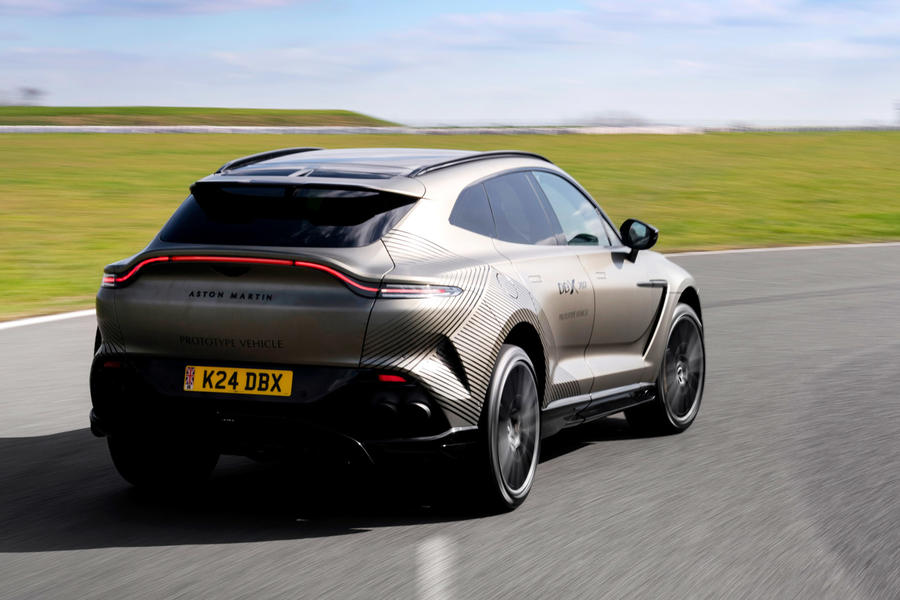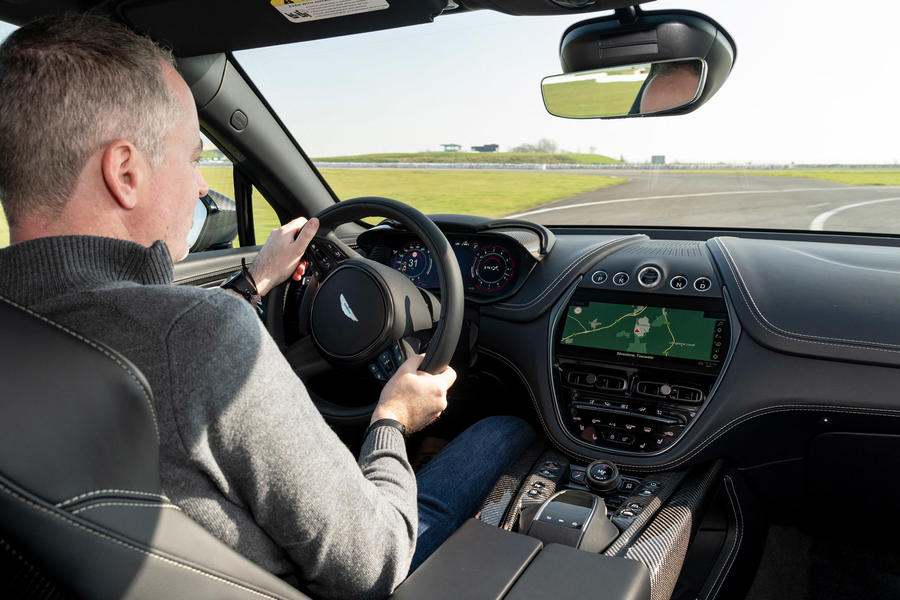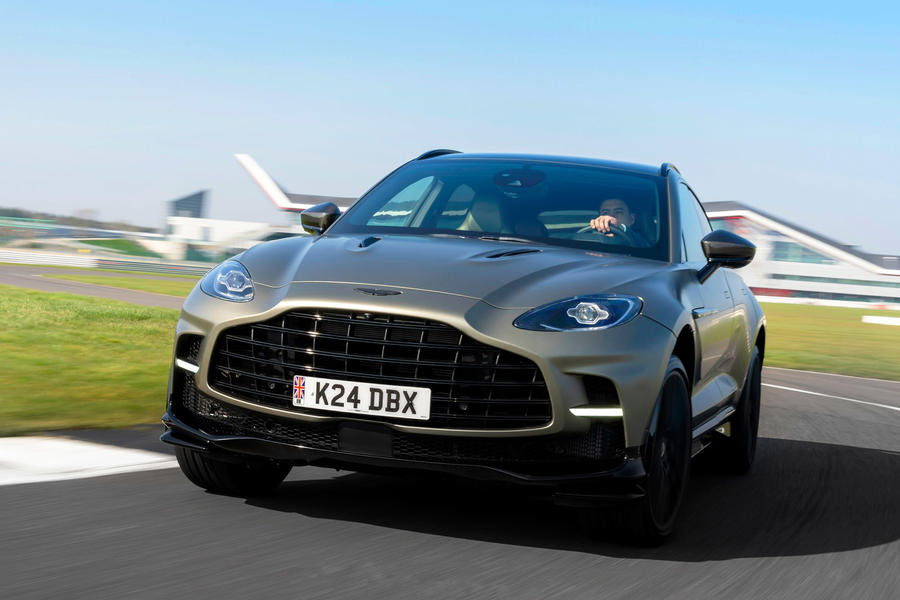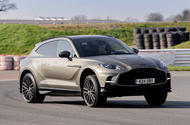Range-topping DBX’s headline-grabbing power figure is only a small part of a significant package of revisions
The new DBX 707’s place in the world might seem obvious: a faster, brawnier version of the find-handling Aston Martin DBX intended to put some clear water between it and rivals in this ultra-competitive segment.
But it has another role, one that causes Aston Martin CEO Tobias Moers to acquire a predatory grin: proving itself the fastest production SUV in the world.
The proof of that will doubtless come at the Nürburgring, where Aston Martin is planning to use the 707 to break the Porsche Cayenne Turbo GT’s 7min 39sec lap record for an SUV. And that’s break as in smash.
But while that’s the target, the revisions haven’t been allowed to compromise the DBX’s gentlemanly appeal. When Moers talks about the changes, he spends far longer talking about the new chassis settings than the revisions that have delivered the headline power figure (for the record: new ball-bearing turbos and a heavily revised induction system; the bottom end is unaltered.) While the front suspension has been stiffened to improve steering response, the rear dampers have been softened to improve traction.
Having demonstrated that it’s also capable of some lurid drift angles, Moers leaves me to experience the car for myself.
Yes, the DBX 707 is both savagely loud and ludicrously fast when unleashed, launching hard and with the short gearing of the new nine-speed wet-clutch automatic gearbox making it hard to keep up with the engine’s ravenous demand for new ratios when under manual control. It’s the first time I’ve found myself wanting a brighter and more insistent change-up display in an SUV.

But slowing for and getting around the first corner proves the rest of the DBX 707 feels correspondingly upgraded, too, with the huge carbon-ceramic brakes for the thermal loadings of turning so much kinetic energy into heat and the massive 23in P-Zero tyres finding huge grip.
The revised front geometry has removed any hint of slack from the DBX 707’s steering responses, but not at the expense of an increase in force necessary to turn the wheel. The weighting is still light, although feedback is present. Responses are both keen and accurate, and the even taking liberties with the kerbs at Silverstone’s Stowe circuit didn’t create any significant kickback. The steering feels very AMG-like, which, given Moers’s pre-Gaydon life, is hardly surprising.
Although the DBX 707’s anti-roll system cancels most lean, it can’t disguise either the slightly odd sensation of sitting so high in something so potent or the fundamental challenge of persuading 2245kg of mass to change direction quickly.
In Stowe’s slower corners, it wasn’t hard to provoke understeer, although this wasn’t excessive and happened under loadings that would rarely be encountered on road. But nor was it hard to engender oversteer, with the stability control’s permissive Sport mode allowing impressive slides before intervening, with the ability for the more heroic (or foolhardly) to turn the system fully off.
Such amateur dramatics are unlikely to be high on the priority list for too many potential buyers. The DBX 707’s predictability at and beyond its limits will be one of its key strengths for that putative Nürburgring lap time. More important is the fact that it doesn’t seem compromised when being driven at more realistic speeds. Moers says the real-world comfort level is actually higher than that of the regular DBX.

Other changes experienced briefly around Stowe included the new sports seats, which clamp you securely, plus a revised centre console with a rotary dynamic-mode selector plus separate buttons for dampers, stability control and the manual gearbox mode.
The dashboard display screen still lacks touch sensitivity, but Moers says Aston Martin is working hard on what will become its own user interface.
While much less flamboyant than the Lamborghini Urus both inside and out, the DBX 707 is almost certainly considerably faster.
For a perspective on its outlandish performance, consider the fact that its claimed 7.4sec 0-100mph time is just 0.1sec behind that of the Jaguar XJ220 – the fastest production car in the world 30 years ago. Yet this is what the top end of the market is demanding. Moers reckons that the 707 is likely to make up more than half of total DBX production.
Prices start at £189,000 – a £17,800 supplement over the standard DBX. We will be able to tell you how the finished version drives on road next month.Aston Martin DBX 707 prototype specifications
Price £189,000 Engine 3982cc, V8, twin-turbocharged, petrol Power 697bhp at 6000rpm Torque 663b-ft at 4500rpm Transmission 9-spd automatic, 4WD Kerb weight 2245kg 0-62mph 3.3-sec Top speed 193mph Fuel economy 19.1mpg

Source: Autocar
